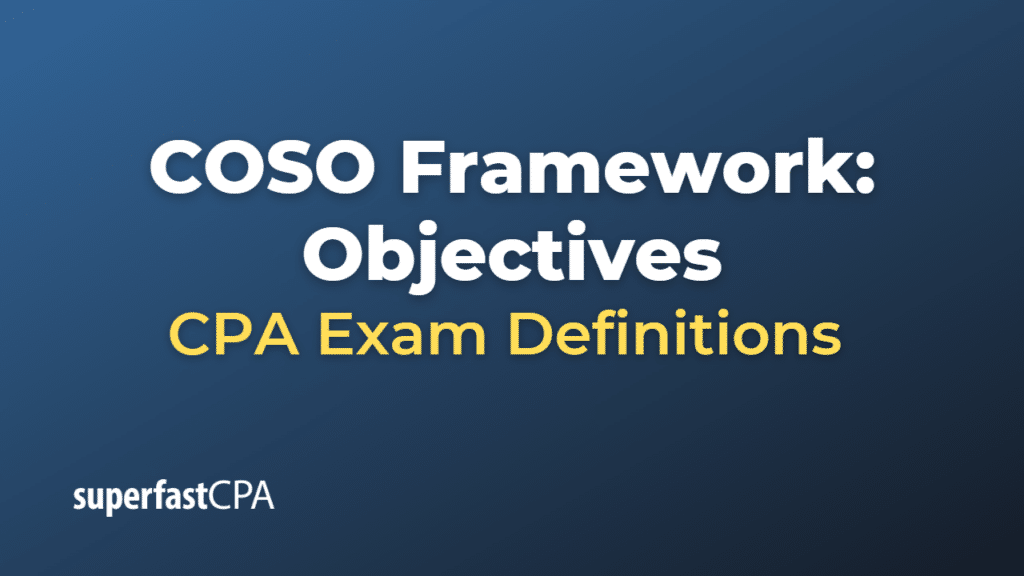COSO Framework: Objectives
The COSO Internal Control Framework aims to provide organizations with a comprehensive and flexible structure for designing, implementing, and evaluating their internal control systems. The framework focuses on three primary objectives, which are often interrelated and support the overall effectiveness of the organization’s internal control system. These objectives are:
- Operations Objectives: These objectives focus on the effective and efficient use of resources, ensuring that the organization’s operations run smoothly and meet established goals. Operations objectives include various aspects such as maintaining operational efficiency, safeguarding assets, and optimizing resource utilization. A robust internal control system helps organizations achieve these objectives by identifying, assessing, and mitigating risks related to operations.
- Reporting Objectives: Reporting objectives pertain to the accurate, reliable, and timely preparation and presentation of financial and non-financial information. This includes both internal and external reporting, such as financial statements, management reports, and regulatory filings. The internal control system supports these objectives by ensuring that relevant information is identified, captured, and communicated, and that the organization adheres to the applicable financial reporting framework, laws, and regulations.
- Compliance Objectives: Compliance objectives involve adhering to the laws, regulations, and other external requirements that apply to the organization. An effective internal control system helps the organization identify and manage compliance risks, ensuring that it meets its legal and regulatory obligations. This may include complying with industry-specific regulations, tax laws, labor laws, and other applicable requirements.
The COSO Internal Control Framework aims to help organizations achieve these objectives by providing a structure that incorporates five interrelated components: control environment, risk assessment, control activities, information and communication, and monitoring. By implementing a robust internal control system based on the COSO framework, organizations can manage risks, enhance operational efficiency, ensure accurate and reliable reporting, and maintain compliance with applicable laws and regulations.













